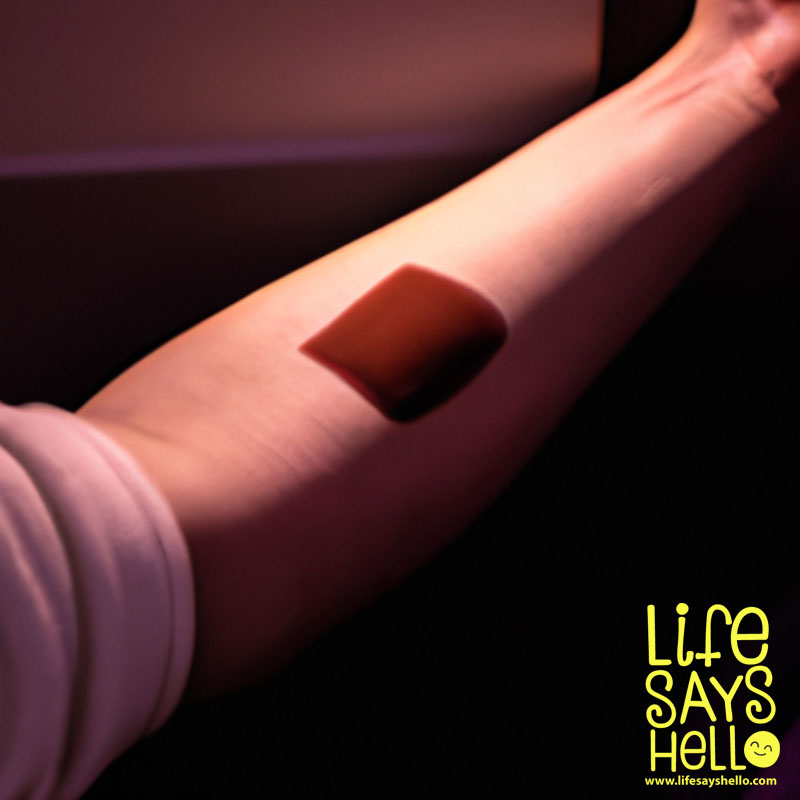The Therapeutic Benefits of Hot Yoga: How Sweating It Out Can Improve Your Health

Looking for reasons to head to a hot yoga studio? This in-depth guide explores the science-backed benefits of hot yoga, from increased flexibility and calorie burn to better sleep and bone health. Read on to learn how embracing the heat can boost your physical and mental wellbeing.
Hot yoga, also known as Bikram yoga, is performed in a heated room with temperatures ranging from 95 to 105 degrees Fahrenheit. The heat allows your muscles, joints, and ligaments to relax and stretch more deeply, while also causing you to sweat profusely. This intense style of yoga offers numerous benefits beyond traditional yoga practiced at normal temperatures.
As a casual yogi and fitness enthusiast, I used to be skeptical of hot yoga. Is it really that beneficial or just a trendy gimmick? However, after doing extensive research and trying it myself, I’m convinced this steamy workout lives up to the hype. Here are 7 science-backed ways hot yoga can improve your health and fitness.
1. Hot Yoga Improves Flexibility
One of the main benefits of hot yoga is improved flexibility. The heat allows your muscles to relax, elongate, and stretch more deeply than in traditional yoga. Warm muscles are more pliable, having reduced resistance to motion. This allows you to safely move deeper into poses.
Several studies have found practicing yoga in a heated environment leads to greater range of motion and flexibility compared to the same poses at normal studio temperatures. Over time, this increased stretch can make difficult poses more accessible.
As we age, muscles naturally become tighter and less flexible. Hot yoga can counteract this loss of flexibility by heating tissues to temperatures that allow for greater temporary elongation. This helps maintain joint mobility and range of motion, which becomes especially important as you get older.
For yogis dealing with limited flexibility due to previous injuries or medical conditions, hot yoga can be highly beneficial. The heat gently loosens tissues in a way that may be difficult to achieve in traditional yoga. However, it’s important to ease into the practice slowly and avoid overstretching.
Overall, embracing the heat allows your body to open up in new ways, with poses feeling deeper and more expansive. Just be sure to stay hydrated and listen to your body’s limits.
2. Hot Yoga Torches Calories
Looking to burn mega calories? Hot yoga cranks up your heart rate and metabolism, leading to increased calorie and fat burn. When your muscles heat up, your heart has to work harder to pump blood to them. The heat stresses your cardiovascular system similar to exercise.
Research shows hot yoga burns significantly more calories than practicing the same yoga at room temperature. In one study, women burned 330 calories in a 90-minute hot yoga class, compared to just 140 calories burned in a regular heated vinyasa class.
The extreme temperatures cause your core body temperature to rise. In response, your body has to work hard to cool you down through sweating and increasing blood circulation. This extra physiological effort ramps up your metabolism. Studies show a 90-minute hot yoga session can burn around 500 calories for men and 330 calories for women on average. However, the exact amount varies based on the style of yoga, room temperature, and your own exertion levels.
Hot yoga also provides cardiovascular benefits similar to other high intensity interval training workouts. Moving between heat-inducing active poses and resting postures is akin to interval training. Your heart rate spikes and drops repeatedly, for a sustained cardio workout.
3. Find Your Zen: Hot Yoga Reduces Stress
Between work deadlines, family obligations, and the generally frantic pace of modern life, most of us are under constant stress. Hot yoga provides a therapeutic antidote to daily anxieties and worries. The heat, breathing exercises, and meditative nature of a hot yoga practice can do wonders for lowering stress.
Several studies have found hot yoga can decrease the levels of cortisol, adrenaline, and other stress hormones. One study had participants take 12 weekly Bikram yoga classes. By the end, they showed significantly reduced cortisol levels, anxiety, and improvements in stress management on psychological evaluations.
The benefits appear to come from hot yoga’s ability to activate your parasympathetic nervous system, responsible for relaxation and regeneration. As your body heats up, your heart and breathing rates increase. But holding poses helps initiate your rest and digest response, bringing systemic balance.
Incorporating controlled yogic breathing also helps lower stress. Deep breathing stimulates your vagus nerve, triggering neurotransmitter release to make you feel calm and relaxed. When combined with meditation during Savasana, hot yoga provides a holistic stress-busting treatment.
4. Get Your Heart Pumping: Cardiovascular Benefits
While not as strenuous as a HIIT workout, hot yoga still gives your heart and lungs an effective cardio workout. The sustained increased heart rate during hot yoga provides cardiovascular benefits on par with lower intensity exercises like brisk walking.
Due to the heat stress, your heart has to work harder to pump oxygenated blood through your dilated blood vessels to your working muscles. One study found Bikram yoga increased heart rate to an average of 144 beats per minute for women, peaking at 166 bpm. This is comparable to the heart rate elevating effects of moderate intensity walking.
However, hot yoga may provide greater cardiovascular benefits than walking, due to the combination of sustained aerobic activity and strength training elements. The active standing poses engage your leg muscles similar to hill climbing. Planks and push-ups mimic resistance training.
Regular hot yoga training can also lower resting heart rate, indicating improved cardiovascular fitness. In one study, 8 weeks of Bikram yoga decreased resting heart rate in healthy adults. Other research shows it can increase maximal oxygen uptake, a measure of endurance.
The cardiovascular benefits of yoga are clear. But heating up your practice magnifies these heart healthy effects, for greater gains.
5. Feel the Flow: Improved Circulation
Moving your workout into the hot room also comes with circulation perks. The high temperatures dilate your blood vessels, increasing blood flow throughout your body. This results in improved oxygen and nutrient delivery to your tissues.
Heat causes vasodilation, meaning it relaxes the smooth muscles lining your arteries and veins. As these blood vessels expand, circulation increases. Some studies suggest heat therapy can reduce vascular resistance as much as 25% to 30%.
Enhanced blood flow also benefits your muscles. More oxygen-rich blood reaches your working muscles, allowing them to function optimally. Improved circulation also speeds up recovery, flushing out metabolic waste products like lactic acid.
The effects of heat-induced vasodilation are temporary. But over time, the increased blood flow during hot yoga classes can enhance endothelial function and blood vessel elasticity. Greater circulation provides nourishment for your muscles, organs, and all other tissues.
6. Sleep Like a Baby: Hot Yoga Improves Sleep Quality
Between your racing thoughts and endless to-do lists, you may feel too wired to fall asleep at night. Here’s one more reason to add hot yoga to your routine: studies show it can significantly improve sleep quality.
Researchers found adults who practiced hot yoga fell asleep faster, slept longer, and felt more well-rested in the morning compared to a control group. Similar studies show regular yoga positively impacts sleep, but hot yoga amplifies these effects.
There are a few reasons hot yoga helps induce quality shut eye. For one, the intense workout reduces cortisol and physically tires you out, priming you for sounder sleep. It also helps lower stress and anxiety that can interfere with sleep. The boost in core temperature followed by cooling down also mimics the natural drop in body temp that facilitates sleep.
Interestingly, the timing of your hot yoga session matters. Practicing in the morning or afternoon allows your core temp to normalize before bedtime. But taking an evening class 0.5 to 4 hours before bed further helps precipitate the natural decline in body temp overnight.
So if you’re dealing with insomnia or restlessness, try some hot yoga. The benefits for sleep are just one more reason to embrace the heat.
7. Strengthen Your Bones: Increased Bone Density
Osteoporosis and loss of bone mass are unfortunately common issues, especially for women as they age. But research suggests that Bikram yoga may help stave off bone loss and even increase bone density.
Several studies have found 8 to 12 weeks of regular Bikram yoga increased bone density in the spine, hips, and femur bones in the legs. One study using imaging scans showed increased mineralization and thickening of cortical bones after several months of Bikram.
It appears the weight-bearing nature of the practice combined with heat stress provides osteogenic benefits. The standing poses and balancing postures provide resistance to stimulate bone growth, similar to strength training. Heat also prompts bones to mineralize as the body tries to counteract hyperthermia.
Maximizing bone density in your younger years provides longer-term protection against osteoporosis. But even older adults can benefit from hot yoga’s bone strengthening advantages. For those at risk of fractures and low bone mass, adding Bikram into your routine could help tip the scales.
Concluding Thoughts on Hot Yoga Benefits
After reviewing the extensive research, it’s clear this sweat-inducing yoga style offers impressive benefits beyond traditional practice at normal temperatures. From increased flexibility and calorie burn to better sleep and circulation, hot yoga provides head-to-toe health perks.
However, it certainly isn’t for everyone. Make sure to take precautions if trying hot yoga for the first time. Stay hydrated by drinking electrolyte-rich fluids before, during, and after class. Ease into the heat gradually to allow your body to acclimatize. Avoid hot yoga if you are pregnant, have heart disease, diabetes, or high blood pressure. Listen to your body and don’t push past your limits.
While hot yoga has its critics, I believe the benefits outweigh the risks for most people. But ultimately, finding any style of yoga that you enjoy and keeps you active is what matters most for your health. After researching this steamy discipline, I know I’ll be heading to the hot studio more often to reap the rewards. Give it a try yourself and see if you soak up the benefits!




Comments